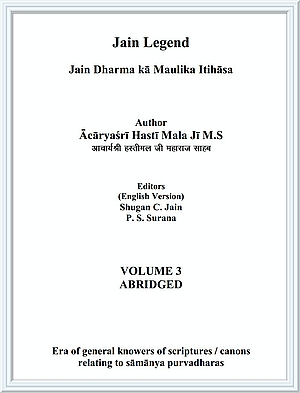- In the second century AD, Yāpanīya congregation was dominant in Tamilnadu up to Kanyakumari.
- In the 4th - 5th century Ad and thereafter, Yāpanīya congregation became a dominant and active religious order in the northern Karnataka.
- In the fifth and sixth centuries? AD, Pālasikā which is village Halasīgrāma in Belgāma today was the seat of power of Yāpanīya congregation.
- In 7th century AD, village Aīhola in Bījāpura district was the centre of power of Yāpanīyas
- In the 10th century AD, many places in district Ṭumkura were the centres of Yāpanīya congregation. After this Yāpanīya congregation became the dominant and prominent congregation in Dhādawāda, Kolhapur and Belgāma.
- In the 11th and 12th century, only northern parts of Karnataka remained as the regions of Yāpanīya influence.
Dynasties which supported Yāpanīya congregation
Kings of Gaṃga Rāja and Poyasala dynasties in Karnataka were followers of Jainism from the beginning. Besides these, dynasties of Kadamba, Raṭṭa, Rāṣṭrakūṭa, Cālukya, Śilāhāra, Kalacurī etc gave royal patronage from time to time to Jainism and offered liberal state support to it.
Dynasties which supported the growth and influence of material based traditions
Hoyasala (Poyasala), Kadamba, Gaṃga and Rāṣṭrakūṭa dynasties in south contributed significantly in the origin and growth of Yāpanīya, Bhaṭṭārakas and temple dwellers congregation and traditions.
During the times of all round calamities and great difficulties befell on Jainism on all fronts, from east to west and from the foothills of Himalaya in north to the coastal areas of south and many islands in the sea around southern coast; the principal ācāryas of these material based Jain traditions took support of ruling kings and dynasties from time to time when needed established Jain dynasties like Hoyasala (Poyasala) and Gaṃga. With the help and support of such kings and dynasties, they not only protected Jainism from extinction but even established and enhanced its influence far greater. The names of such Jains belonging to material based traditions will always be written in gold in the history of Jainism for their tremendous contribution.
After V.N. 1000, dynasties of Satavāhana, Cola, Cera, Pāṇḍya, Kadamba, Gaṃga, Cālukya, Rāṣṭrakūṭa, Raṭṭa, Śilāhāra, Poyasala etc extended their patronage and support to Jainism in a significant manner and established its influence and supremacy again.
During the reign of King Sundara Pāṇḍya Jainism was one of the most dominating religions of majority of people in south and Tamilnadu in particular. However due to the defeat of Jain monks in debates with Jṅānasambandhara in Madurai, Suṃdara Pāṇdya left Jainism and adopted Śaiva religion. According to the terms of the debate, he ordered 5000 Jain monks to be hanged to death.
After the conversion of Pāṇḍya dynasty to Śaiva religion, even the Cola dynasty converted to Śaiva religion. They also started to inflict heavy casualties and severe hardships on Jain monks and followers alike. After them, dynasties of Basavā, Ekādanta, Ramaiyā and the growing influence of Ācārya Rāmānujama of Śaiva religion in propagating Śaiva and Vaiṣṇava religions in south, they started inflicting heavy looting, arson and mass conversion of Jains to their fold made Jainism almost extinct in the once majority of population of Andhra Pradeśa practicing Jainism.
We shall now briefly review those dynasties and their works that supported and patronized Jainism to retain its identity and even become a major religion during this testing and extremely difficult period.
 Acharya Hasti Mala
Acharya Hasti Mala
